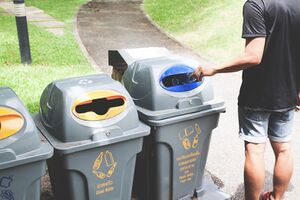What A Produce Distributor Can Do To Reduce Waste
In many countries, the fresh produce business still has a big problem with waste. A WWF report says that food waste is responsible for 6–8% of greenhouse gas emissions in the U.S. Also, the Food and Agricultural Organization (FAO) says that 46% of food waste comes from fruits and vegetables.
Still, a lot of fresh food is lost at retail every year. A study shows that this huge waste is because fresh food spends half of its shelf life traveling. Facts and numbers show how important it is to store, handle properly, and transport produce to cut down on the amount of waste that the fresh produce industry reports each year.
Fresh food distributors can keep this waste to a minimum by using new technology and automated systems in their work. One of these automated systems, Silo, is made for the fresh produce industry and helps you keep track of the whole supply chain and ensure you don't overstock. This solution also makes it easier to make accurate orders for stock.
Utilize The FIFO (First In, First Out)
The First-In, First-Out (FIFO) strategy is a well-known way to manage the stock of fresh food. This system ensures that the food that will go bad soonest is taken out first. In other words, when an order is placed for a certain type of product, the first lots of that product that were received are sent out. This strategy cuts down on waste by ensuring nothing stays on the shelf for too long.
Almost all packaged products have information on when they were made and when they will go bad. The positioning system can be used to implement FIFO. Older purchases can be put in front of new ones to show the order of sale priority. The method of reading from right to left also works. Here, the older things are on the right, and the newer things are on the left.
Flexible Pricing
The fresh produce business isn't the only one to use dynamic pricing. It is used to cut down on waste in many fields. The principle is quite simple. Prices of goods can be changed based on how good they are or how good they are expected to be. Fruits and veggies that have been in the storage facility the longest may get up to 50% discounts. Even if you lose cash on the sale, it's better than having your whole inventory go to waste.
Make Sure Temperature and Moisture Are Right
Keeping food at the right temperature and moisture level can make it last longer. Smartly monitoring temperature and moisture lets you tell if each lot is being kept at the right temperature and moisture level. By keeping an eye on the climate and humidity, you can stop bacteria and mold from growing, spreading from one lot to the next and causing much fresh produce to be thrown out.
The right packaging should also be used to protect each type of product. For example, clamshells are used for berries, shiitake, and other products easily damaged by crushing while stocking. Mesh bags can be used for citrus, red onion, and cabbage. Corrugated fiberboard, wire-bound crates, and pulp containers are other common packaging materials.
Get Supplies That Match The Demand
Overstocking is a common reason why people throw away food. Aside from keeping an eye on the number of items in stock, it also helps to know what produce is in demand at certain times. Knowing which fruits and vegetables are popular each season, you can decide which ones to bring into your clinic and which ones to avoid. Market surveys are a common way to determine what goods people want.
You could ask stores what items are the most popular. This tells you what stocks to pay attention to. But this method isn't always reliable and doesn't always work. A produce ERP can help you get accurate market information depending on the season. They also give information about how people behave and what they buy by showing historical data in graphs and charts.
Give The Extra To Charity
Do you have surplus fruits and vegetables? Even with discounts, do you still have too much stock? Think about giving the rest to groups that help hungry people. You can help people in need and simultaneously reduce the amount of trash you make.
Recycle
Fruits and vegetables that have gone bad can be reused and recycled. Composting is a great way to change and reuse food that is going bad. By composting, nutrients can be put back into the soil, making it healthy and good for growing things.
By making compost, you also use fewer fertilizers, which can leach substances into the environment. It is healthier than fertilizers and helps the soil retain more water. If you sell your bad food to a recycling plant, a vendor, or a well-known grower, they will use it.
Other ways to reuse old food include:
- During processing, the pulp and juice are separated.
- Feeding the animals
- Giving it to food banks in the area
Effects of Producing Waste
Produce waste has a lot to lose, besides making people feel bad. This includes things like financial costs and damage to the environment. In terms of the environment, the juice from fruits and vegetables that have gone bad can increase the amount of methane in the soil.
Methane gas, a major greenhouse gas, is also made when this juice breaks down. Inventory waste is another way to lose a lot of money. When a company wastes a lot, it can lose a lot of money and, in the long run, may not be able to pay its workers' wages. The same thing can happen to productivity.
So, businesses are told to find ways to reduce the amount of waste they make. Making software programs could solve this important problem because they can help keep an eye on the whole supply chain, track information about lots, and keep accurate inventory counts.

